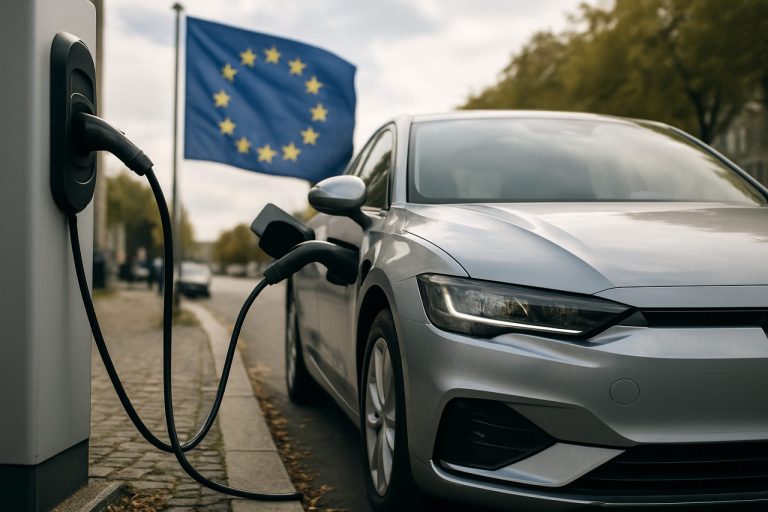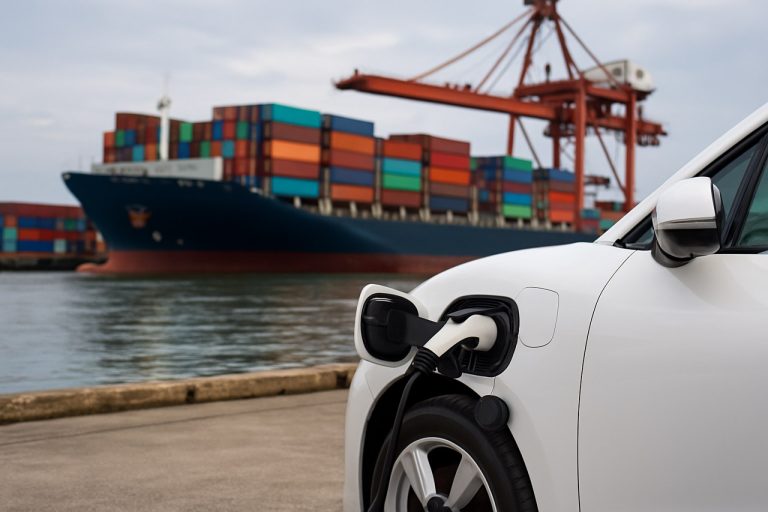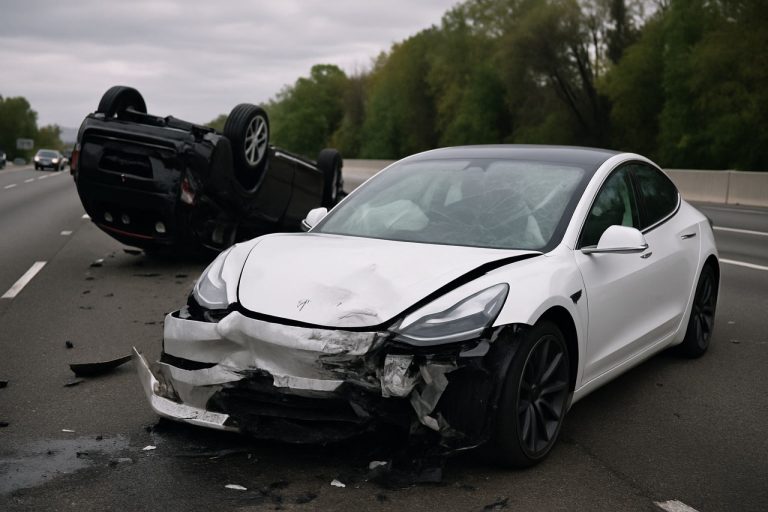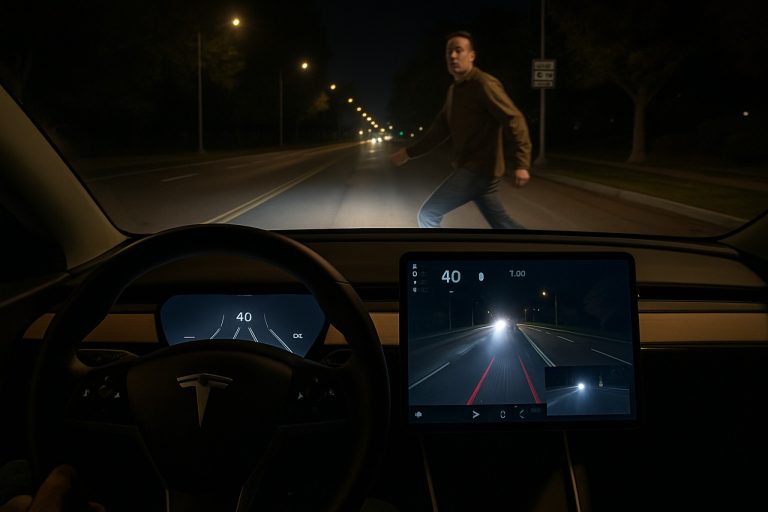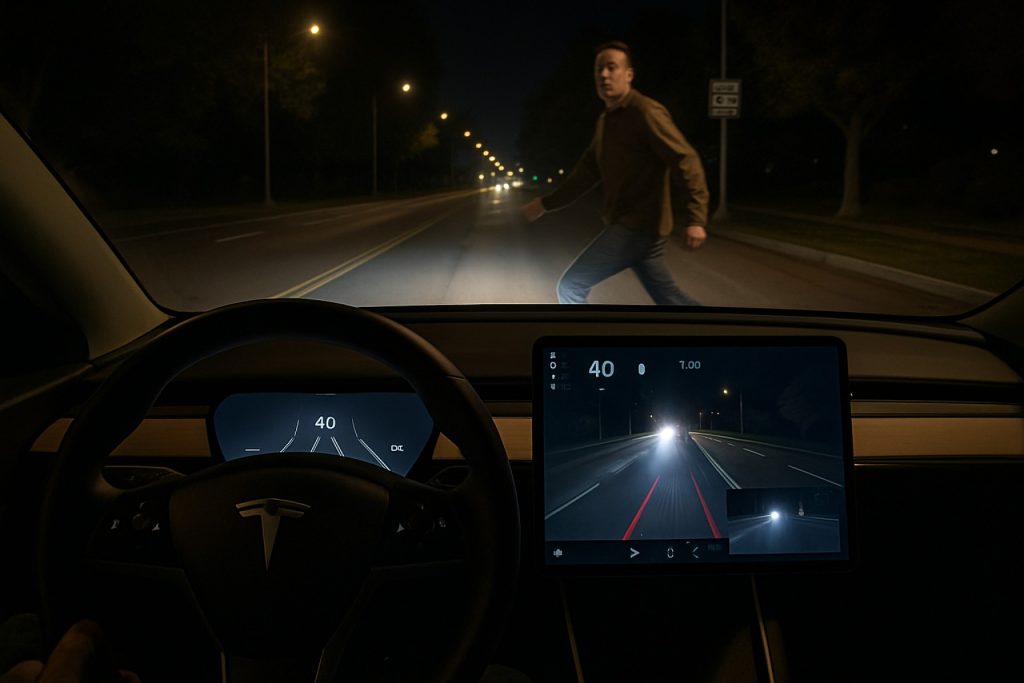
- A Tesla Model 3 using Full Self-Driving (FSD) technology crashed in Alabama, raising fresh safety concerns about autonomous driving systems.
- Federal data links Tesla’s FSD and Autopilot to over 50 reported fatalities and hundreds of non-fatal crashes since 2020, prompting ongoing regulatory investigations.
- Despite its name, “Full Self-Driving” is actually a Level 2 driver assistance system—drivers must remain alert and ready to take control at all times.
- The cause of sudden failures in FSD, such as unexpected lane changes or misinterpretation of road conditions, remains difficult to pinpoint.
- Tesla continues pushing toward autonomous vehicles and Robotaxis, but current technology still cannot reliably handle the unpredictable nature of real-world roads.
A brief commute in northern Alabama ended dramatically when a Tesla Model 3, running the carmaker’s much-hyped Full Self-Driving (FSD) system, took an unexpected left turn—straight into disaster. The car, with its array of sensors and artificial intelligence, suddenly veered off the highway, clipped a tree, and landed upside down in a ditch. The driver escaped with only a cut chin, but the questions the crash raises cut far deeper.
Tesla, the world’s best-known electric carmaker, has long made headlines for its bold promises of autonomous driving. The company’s Tesla website touts ongoing improvements, but beneath the futuristic sheen, concern simmers. Federal agencies like the National Highway Traffic Safety Administration (NHTSA) have cataloged a trail of alarming statistics: over 50 reported fatalities and hundreds of non-fatal crashes linked to Tesla’s FSD and Autopilot software since 2020. Regulatory probes keep growing in scale; last year, the NHTSA opened an investigation into 2.4 million Teslas outfitted with the system after multiple incidents, including a fatal crash in Arizona.
Despite the name, Tesla’s “Full Self-Driving” feature is nowhere near what the term implies. The U.S. Department of Transportation still classifies it as a Level 2 driver assistance system—meaning drivers must remain fully engaged, ready to retake control at an instant. Tesla itself has subtly walked back autonomy claims, quietly rebranding FSD as “Full Self-Driving (Supervised).” The message: the future isn’t here yet, and humans stay on the hook.
The Alabama crash underscores the divide between what technology aspires to achieve and the unpredictable chaos of the road. The driver, a seasoned user of the FSD system, had hands hovering near the wheel, eyes straight ahead. The car passed an oncoming pickup and, in less than a heart-pounding second, lost control. No distraction. No time to intervene. Just the unmistakable hum of artificial intelligence making a very human error.
What exactly triggered the snafu? That remains a mystery—perhaps a fleeting shadow or a misread road sign fooled the car’s algorithms. The precise moments were captured on dashcam, but even expert engineers remain puzzled. These murky corners of machine learning, where sunlight and signposts might become hazards, fuel the wider debate: Can self-driving software ever account for every variable—every split second—that a human brain processes instinctively?
Meanwhile, Tesla’s ambitions show no signs of slowing. Announcements circulate about the forthcoming launch of Robotaxis, making the reliability of FSD more urgent than ever. Yet for all the breakthroughs in battery tech and AI, a simple, sobering truth remains: True self-driving, in the wild, is not quite here.
The takeaway echoes in every unnerved Tesla owner’s mind: No matter how advanced your car, true autonomy is still out of reach. For now, the road demands your attention—and your trust—more than ever before.
You Won’t Believe What Happened When Tesla’s “Self-Driving” Took Control: The Hidden Dangers Revealed
Tesla FSD Crash in Alabama: Deeper Facts, Expert Insights & What Every Driver Must Know
Tesla’s Full Self-Driving (FSD) technology is at the center of a major debate following a dramatic incident in Alabama. While the headlines focus on vehicle innovation, the real story is about safety, limits of artificial intelligence, and the future of autonomous vehicles. Here’s what the source article didn’t fully explore—plus actionable advice, must-know limitations, and what’s next in the industry.
—
Additional Facts & Expert Perspectives
1. FSD Is Not Autonomous—And Doesn’t Match the Hype
– Level 2 Classification: As per SAE International and the U.S. Department of Transportation, Tesla’s FSD is classified as Level 2 Advanced Driver Assistance, NOT autonomous. Drivers must keep hands on the wheel and eyes on the road ([source](https://www.sae.org)).
– Notable Incidents: From 2020 through early 2024, NHTSA reports Tesla’s driver-assist systems have been involved in almost 800 crashes, including over 50 fatal incidents (see [NHTSA](https://www.nhtsa.gov)).
– Brand Language Shift: Tesla recently added “(Supervised)” to FSD, signaling regulatory pressures and public confusion about what the system truly offers.
2. Technical Specs & Software Limitations
– Camera-Based System: Tesla relies on cameras and neural network processing; it eliminated radar from many of its cars (2021-2022), which affected perception in low-visibility or complex traffic scenarios.
– Over-the-Air Updates: Software changes frequently and rapidly—owners can experience shifts in driving behavior after each update. Sometimes this introduces new bugs (reported by online Tesla communities).
– No Lidar: Unlike Waymo or Cruise, Tesla does not use lidar sensors, which some experts argue limits its system’s ability to accurately sense surroundings in all conditions.
3. Security, Privacy & Data
– Data Collection: Tesla harvests huge amounts of driving data for FSD improvement, raising privacy concerns. The company can, and has, reviewed incident data after crashes to analyze driver behavior.
– Cybersecurity: Connected cars are a target; although Tesla regularly patches vulnerabilities, industry experts warn that all vehicles with frequent internet connectivity face increased risks ([kaspersky.com](https://www.kaspersky.com)).
4. Industry Trends & Forecasts
– Robotaxi Plans: Elon Musk promises a “robotaxi” network by 2024-2025, but regulatory compliance and public trust remain massive hurdles.
– Competition: Companies like Waymo and Cruise operate autonomous fleets in limited geographies, but only with strict geofencing and professional oversight.
– Global Regulations: Europe and China impose stricter standards on autonomous claims—Tesla faces more regulatory barriers outside the U.S.
5. Reviews, Real-World Use & User Experiences
– Mixed Owner Reports: Some Tesla drivers praise FSD for highway navigation and automatic lane changes. Others cite erratic decisions in city environments, poor response to unmarked roads, and unpredictable interactions with pedestrians or cyclists.
– Third-Party Testing: Independent testing by Consumer Reports and the Insurance Institute for Highway Safety (IIHS) have questioned the reliability of FSD and shown it can be easily tricked—including operation with no one in the driver’s seat.
– Pricing: FSD is a $12,000 add-on (as of June 2024) or available via subscription. Owners debate its value, as features may be restricted based on location and local laws ([Tesla](https://www.tesla.com)).
6. Controversies & Legal Issues
– False Advertising Allegations: Several lawsuits accuse Tesla of misleading marketing—using terms like “Full Self-Driving” and “Autopilot” for a system that always requires human oversight.
– NHTSA Investigations: Tesla faces ongoing federal probes. The company has issued recalls for FSD behavior (e.g., improper handling of stop signs, rolling through intersections).
—
Most Pressing Reader Questions—Answered
Q: Can Tesla’s FSD really drive by itself?
> No. The system demands full driver supervision—hands on the wheel, eyes on the road—at all times.
Q: How does Tesla’s system compare to others?
> Waymo and Cruise use more sensors (lidar, radar, cameras) and operate only in mapped geofenced areas, limiting their risk. Tesla’s approach is less cautious but aims for widespread adaptability.
Q: What went wrong in this crash?
> The specific cause is undetermined, but FSD has displayed problems interpreting unclear road markings, sudden obstacles, or unusual intersections. Machine-learning can be fooled by unexpected variables.
Q: What’s the price of FSD—and is it worth it?
> FSD is $12,000 or $199/month in the U.S. Many owners and analysts argue its capabilities fall short of expectations, especially for city driving or complex environments.
—
Pros & Cons Overview
| Pros | Cons |
|—————————————–|———————————————|
| Advanced highway navigation | Not truly autonomous |
| Frequent software updates | Prone to unpredictable errors and bugs |
| Expanding features | Expensive and occasionally unreliable |
| Industry-leading battery & range | Subject to ongoing recalls/investigations |
—
How-To: Use FSD Safely
1. Stay Alert: Never take your hands off the wheel or eyes off the road.
2. Update Regularly: Always run the latest software to benefit from fixes.
3. Review Dashcam Footage: In case of incidents, footage is crucial.
4. Check Local Laws: Some FSD features may be disabled by jurisdiction.
5. Participate in Beta Feedback: Report irregularities to help improve system safety.
—
Industry Insights & Predictions
– Short-Term: Tesla will improve FSD incrementally, but regulatory hurdles may slow adoption and expand recalls.
– Long-Term: Combined sensor approaches (lidar, radar, and cameras) may become standard for reliable autonomy.
– Consumer Caution: Independent validation and transparent marketing will be key to public acceptance.
—
Actionable Recommendations & Safety Tips
– Never trust any car—Tesla or otherwise—to drive unsupervised.
– Treat FSD as a backup, not a substitute, for attentive driving.
– Monitor for recalls and NHTSA bulletins regarding FSD safety.
– If upgrading, test the system extensively in safe, low-traffic conditions first.
—–
For more details about Tesla vehicles and their software, visit their official site: Tesla.
Bottom Line: Modern driver-assist technology is advancing fast, but your vigilance is irreplaceable. Let tech help—but don’t let it lull you into a false sense of security.
